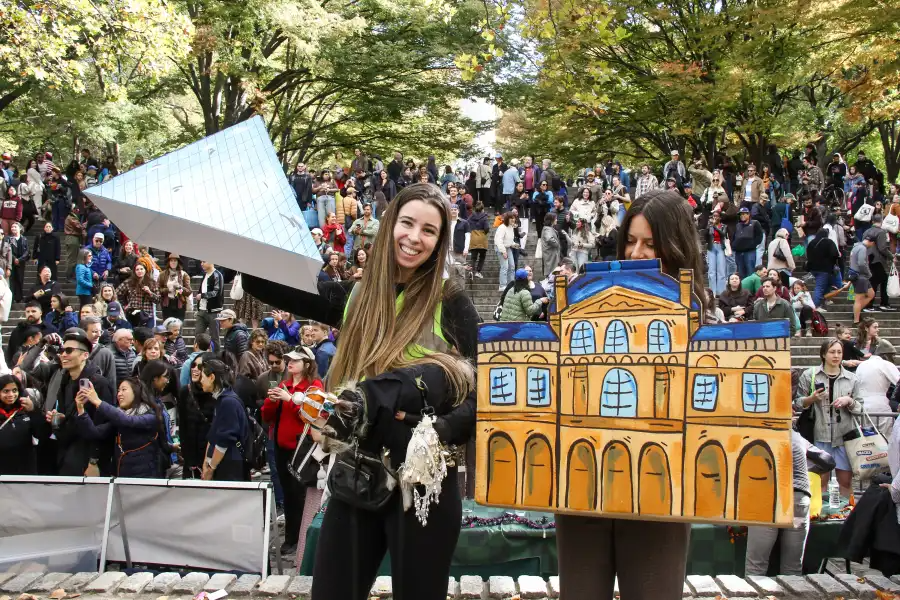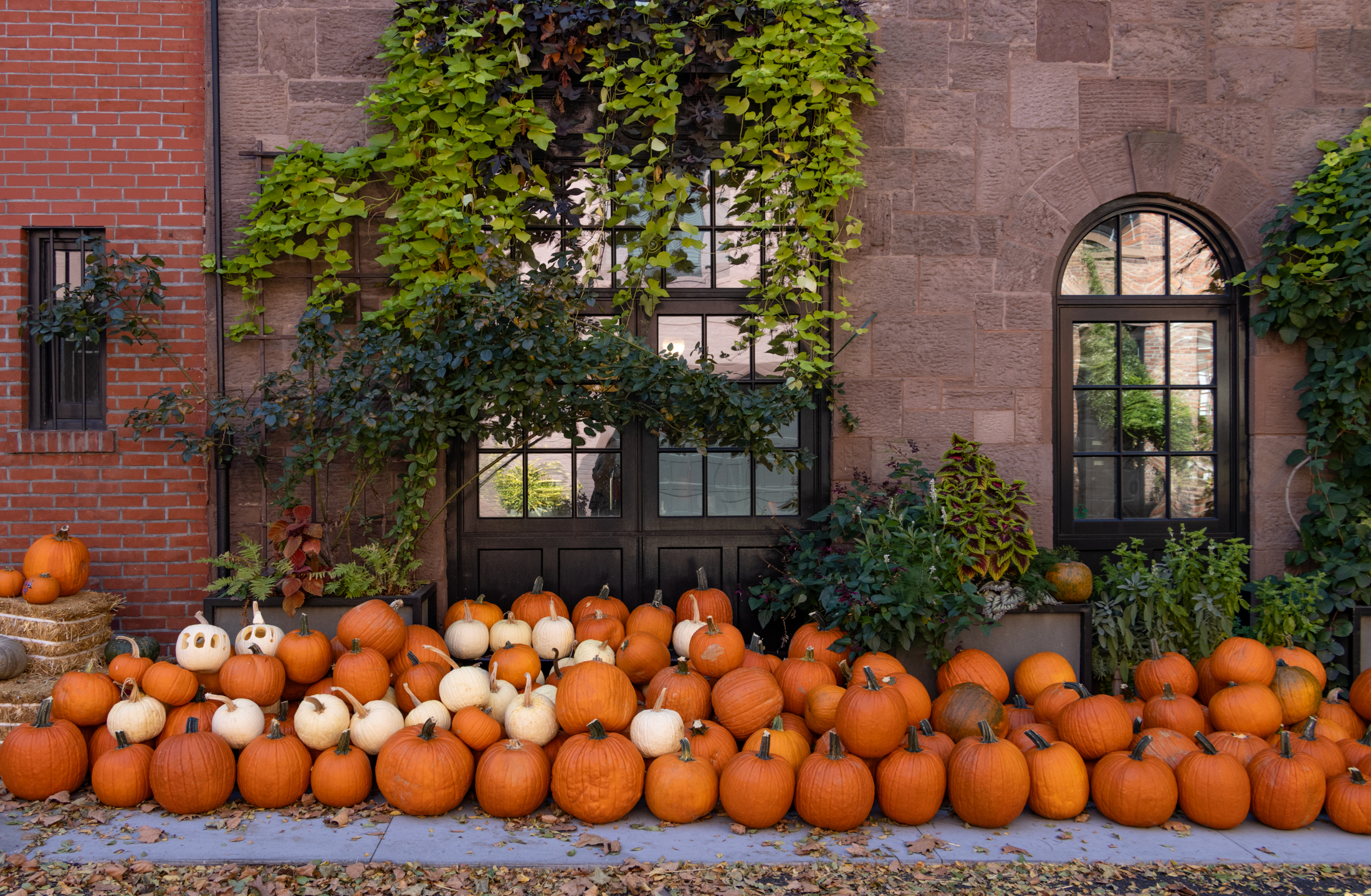Walkabout: Italianates, the Ornamental Imperative
Read Part 1 of this story. A mid 19th century magazine, extolling the virtues of the Italianate brownstone, declared that, the doorway is the most indispensable feature of the structure, and therefore calls loudly for adornment, and should generally be distinguished by more impressive decoration than any other feature. Architects of the time must have…


Read Part 1 of this story.
A mid 19th century magazine, extolling the virtues of the Italianate brownstone, declared that, the doorway is the most indispensable feature of the structure, and therefore calls loudly for adornment, and should generally be distinguished by more impressive decoration than any other feature.
Architects of the time must have been listening, and many went overboard, piling layers of ornament on the doorways of our buildings. Perhaps even more than the other decorative elements, the doorways of the Italianate brownstone define the style.
In the most expensive homes, the doorway is a porch at the top of the stairs, formed by large columns with ornate capitals, holding heavy door hoods that are either rounded, or classic triangular pediments, with heavy carved keystones above the doors.

These are flanked by enormous acanthus leaf brackets which face the street. Smaller acanthus brackets can often be found facing each other in the doorway, and for good measure, more acanthus brackets often frame the windows, and/or support the large window box shelves below the parlor floor windows. There are fine examples in Brooklyn Heights, as well as on Washington Park, in Fort Greene.
Most of the Italianates in Brooklyn do not have the columns, a feature for only the most expensive homes, but all have the acanthus brackets. Some of these brackets are beautiful in their expression of plant forms, and are in amazing condition.
Some architects must have wanted to show off something different, and we can find fantastical combinations of leaves, flowers and decorative shapes. Some of these can be a bit disturbing at first glance, and to the modern eye, look like mutant plants run wild, or extruded foam, especially when the lines have been blurred by water damage, and badly painted over or repaired.

The more creepily vegetal remind us that tastes certainly change over time, and that the desire to please a demanding public can often result in the overdone.
Like any architectural style, over the course of its popularity, the Italianate brownstone can be found in its pure form, as a gracious upper class dwelling, and its knock-offs, as details are simplified for more middle class houses, and again, simplified even more for smaller working class homes, and the acanthus bracket becomes a plain curved shape.
As the years go by, similar styles emerge, and styles are mixed with wild abandon. The addition of a mansard roof, found often as a fifth floor, classifies these Italianates as Second Empire, named after the popularity of the mansard roof in the architecture of Napoleon II, in France.

The addition of carved ornamental patterns incised into the brownstone, alongside familiar Italianate motifs, shows the influence of the Neo-Grec style, itself a popular style here in Brooklyn. The Anglo Italianate has a short stoop and an English basement.
Because of their flat surfaces, Italianates and their cousins were easy prey for the modernizing of brownstones that took place in the 20th century. Cornices, window and door hoods, brackets, and even the graceful double doors have vanished on too many of our streets, leaving bare flat surfaces, improved by paint, stucco, brick and stone faces, and even vinyl siding.
In many of our historic districts as well as unprotected areas, it is not uncommon to see the ornate stoops removed for ground floor entrances, and the tall parlor floor windows bricked in to hold standard window sizes, or doorways filled in to accommodate cheap factory doors.

Fortunately, there are still surviving rows of intact Italianates in many neighborhoods, all of which remind us of why we love our brownstones. Long may they stand. Photo album on Flickr.
Charles Lockwood’s Bricks and Brownstone remains the bible for our brownstone heritage, and was the source of much of the historic and stylistic information. If you love this stuff, you must own this book.













Love this stuff. Thanks MM!
Pigeon, I don’t know for sure, but I would be surprised to find out that any of it was replacements. MAYBE in Brooklyn Heights, where there has always been money, but even there, I would chalk it up to high quality stone used in the first place, carved correctly, installed correctly, and on buildings that were maintained throughout their lives. Also, in many cases, the ornament was protected from a lot of wear and tear by the door and shelf hoods and pediments that these things sit under.
They aren’t all in that good shape. In walking around taking photos, I’d go down a block, like on Vanderbilt, between Gates and Greene, and out of 8 houses with the same carved brackets, a couple would be in perfect shape, a couple more would have one bracket in much better shape than the other, and one or two would almost be unrecognizable. I took photos of the perfect ones. I’d have to say, just from walking around, and this is by no means a scientific survey, a third of the ornament still existing is in great shape, a third has damage and wear, some not all that noticeable from a distance or a photograph, and a third is severely damaged, and/or held together by layers of paint, bad blobby attempts at repair, and sheer willpower.
bedstuy11216- ROTFL! MM and I laugh ourselves sick when we walk through Clinton Hill. Some of those motifs make me blush! But don’t forget- if ever an era suffered from strange repression, it was the Victorian era. They couldn’t even look at a piano leg without going to confession for impure thoughts. I can just see some craftsmen hanging the ornamentation, turning to his helper and saying, “You think they’ll get it?” “Naah! ! It’s foliage, man!” And they both go off, snickering.
Thanks MM, I always look forward to your write ups.
Thanks, bxgrl. I always wondered.
This may sound weird but I always thought that the curve and placement of some of the leaf motifs on the brownstones looked like testicles. Especially from far away.
BS11216, the ultimate source for the entire style is Classical Greco-Roman architecture, especially as evidenced in the triangular pediments, the columns, when they appear, etc. The acanthus leaf is most often found on the capitals of columns, and elsewhere in the architectural portfolio. One 19th century source likens the acanthus to the Greeks and Romans as the equivalent of the lotus leaf was to the ancient Egyptians. It’s everywhere. It is said to symbolize life, rebirth and immortality.
The Victorians loved acanthus leaves. In addition to the Italianate door brackets, they are found throughout mid to late 19th century ornament, in cornice brackets, interior corbels and brackets, and in the spiny stone ornament known as Byzantine leaf, which took the acanthus to almost every surface of Romanesque and Queen Anne architecture. They are also the leaves most often used in conjunction with creating the “Green Men” and animals, those faces with the thick leaves making up their faces.
Great work, MM.
I don’t understand, though.
Some of the ornaments in the photos look new.
How did they withstand the decaying elements of time?
Or, are some of the ornaments in the photos replacements?
It’s a very old motif, dating back to the Greeks because the acanthus is a mediterrean plant- a thorny one at that. Some people say it represents long life or immortality, others seem to think its just a pleasing, symmetrical form. It’s probably one of the most enduring visual motifs in Western Civilization.
Once again M.M. comes through. Love this piece.